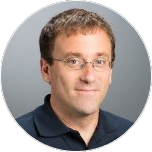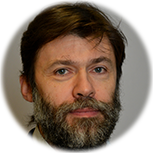The Technology of Swisens
Discovering the aerosol microcosm.
Aerosol particle measurements find many applications in industry and science. Therefore, it is not surprising that there are a variety of methods for measuring particle and particulate pollution. But what if we want to know more precisely which particles surround us? Our goal is to actively contribute to the existing knowledge about the diversity of particles in the air and to develop and advance solutions for real-time measurement and identification of airborne particles.
An overview of the technologies used:
• Measurement Methods• Artificial Intelligence
• Open Source Software
Measurement methods
Digital Holography
Digital holography provides information about the morphology of each particle. The high-resolution holography setup generates images of each particle taken in flight. The advantages of the setup include a large field of view combined with very high resolution to generate a clear image even of particles in the low micrometer range.
UV-induced fluorescence spectroscopy
Complementary information on the biochemical composition of the particles is collected by spectrally resolved fluorescence intensity and fluorescence lifetime measurements. This additional dimension of information allows a highly accurate identification of different aerosol particles.
Fluorescence intensity and spectrum
Several modulated sources excite the particle with different short-wavelength light as it passes by. The induced autofluorescence of the fluorophores contained in the particle is detected spectrally resolved by several receivers.
Fluorescence lifetime
Due to the high-frequency modulation of the excitation, the detected fluorescence emission also exhibits a modulation with a phase shift. Several measurements of different frequencies thus allow the determination of the fluorescence lifetimes of the fluorophores contained in the particle. This approach increases the number of independent measurement points, which is advantageous for the in-depth analysis of particles.
Scattered light and polarization measurement
The time-resolved scattered light measurement with two laser sources of different wavelengths provides information about the size and surface structure of the particles. The time-resolved measurement of the vertically and horizontally polarized scattered light provides additional information about the refractive index.
Our measurement methods in use
Artificial Intelligence
The measurement system generates a unique fingerprint and stores comprehensive information about the morphological and chemical properties of the aerosol particles in the form of data records. Machine learning algorithms integrated in the measuring systems identify the particles on the basis of the recorded properties and give them an appropriate “label”. With the help of the software components developed by Swisens, the identification results can be easily verified.
Artificial intelligence in all areas of application
• SwisensEcosystem Pollen Monitoring• SwisensEcosystem Bioaerosol Monitoring
• SwisensEcosystem Bioaeorosol Research
Open Source Software
The software of our measuring systems is written in the programming language Python and licensed according to the GPL standard. This enables our customers to optimize parts of the software for individual requirements or to use it for other applications. This includes all software parts from the acquisition of the raw data to the pre-processing, training and operation of the machine learning models. Are you not entitled to independent extensions? The software development of Swisens is in close exchange with our user community and optimizes in the sense of the users.
Open Source Software in all areas of application
• SwisensEcosystem Pollen Monitoring• SwisensEcosystem Bioaerosol Monitoring
• SwisensEcosystem Bioaeorosol Research
Learn more in our tutorials
Breaking new ground with Swisens
This is what our satisfied customers say

Benoît Crouzy –
Project Manager Swiss Automated Pollen Network
Federal Office of Meteorology and Climatology MeteoSwiss
weiterlesen >>

Prof Martin Gallagher –
Centre for Atmospheric Science,
University of Manchester
weiterlesen >>

Mikhail Sofiev –
Research Professor
Atmospheric Composition Research Department
Finnish Meteorological Institute
weiterlesen >>
